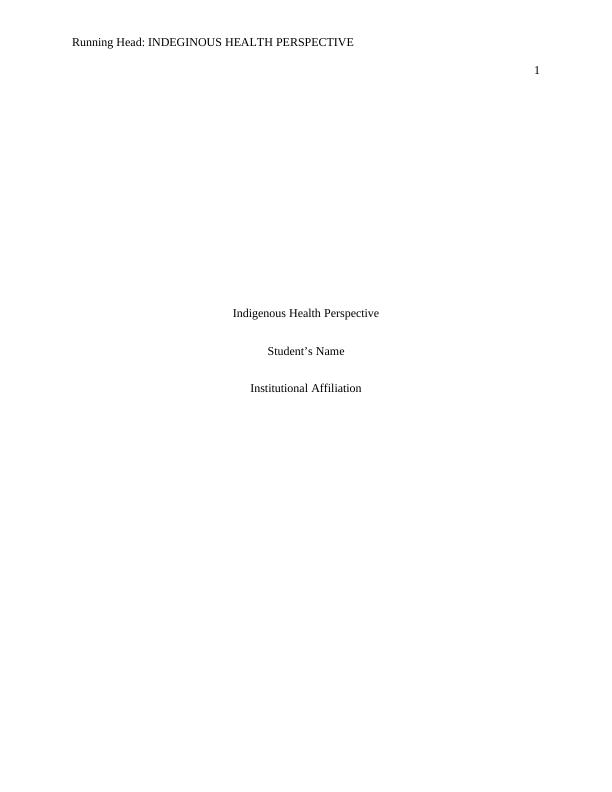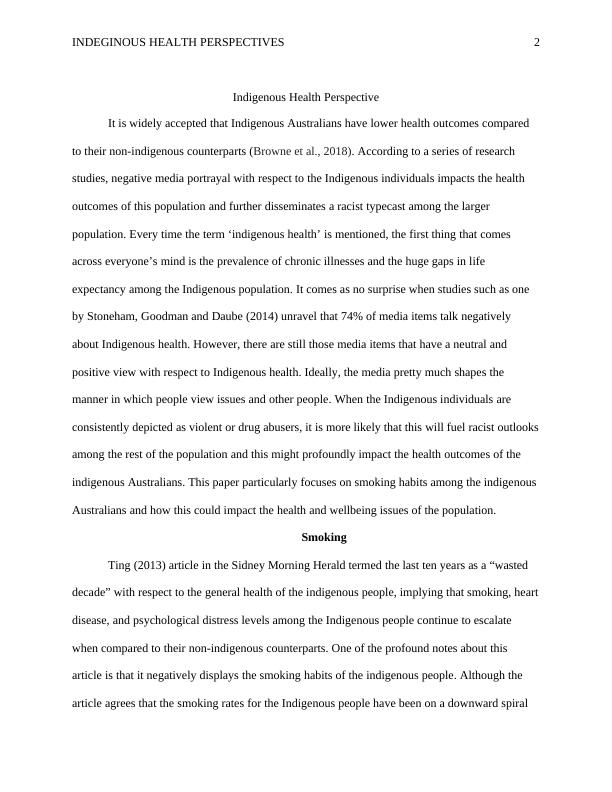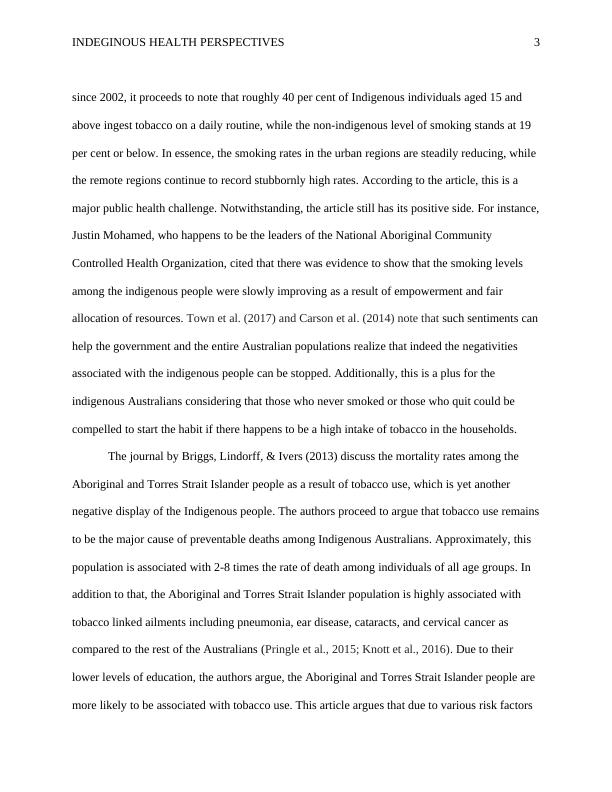Indigenous Health Perspective
Analyzing the impact of media portrayal on the health and wellbeing of Australian Indigenous people
8 Pages2245 Words421 Views
Added on 2022-11-24
About This Document
This paper analyzes the media items and their implications on the health and wellbeing issues of Indigenous Australians, focusing on smoking habits and their impact on health outcomes. It explores various news articles and journals that portray Indigenous Australians in both negative and positive lights, highlighting the efforts being made to curb smoking rates among the population.
Indigenous Health Perspective
Analyzing the impact of media portrayal on the health and wellbeing of Australian Indigenous people
Added on 2022-11-24
ShareRelated Documents
End of preview
Want to access all the pages? Upload your documents or become a member.
Socioeconomic of Indigenous Population Report
|4
|858
|13
Prevalence of Asthma among Indigenous Australian Youths due to Smoking
|12
|2974
|81
Smoking Among Indigenous People in Australia
|11
|2289
|66
Smoking as a Health-related Issue: Reasons for Inequity and Primary Healthcare Intervention
|9
|2392
|296
Portrayal of Indigenous Australians in the Media
|10
|2126
|301
Racism as a Social determinant affecting Indigenous health and well-being
|16
|4498
|451



